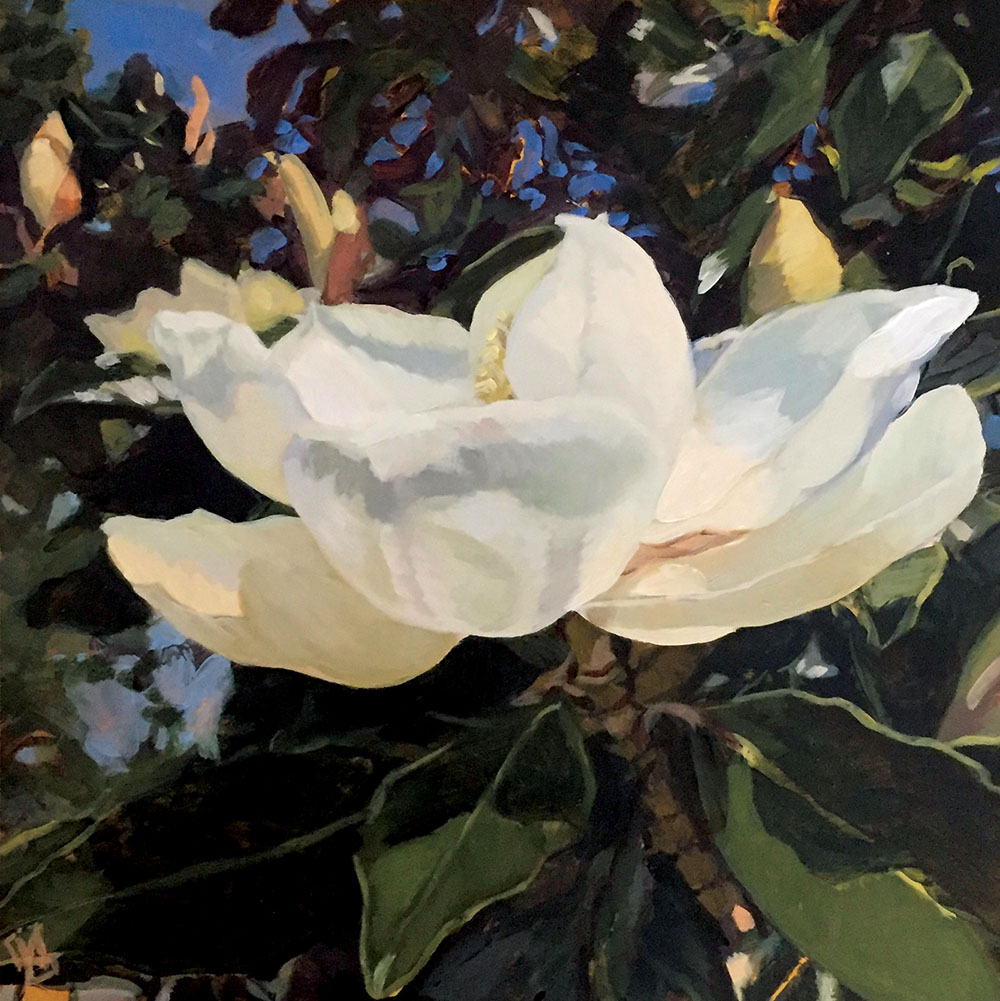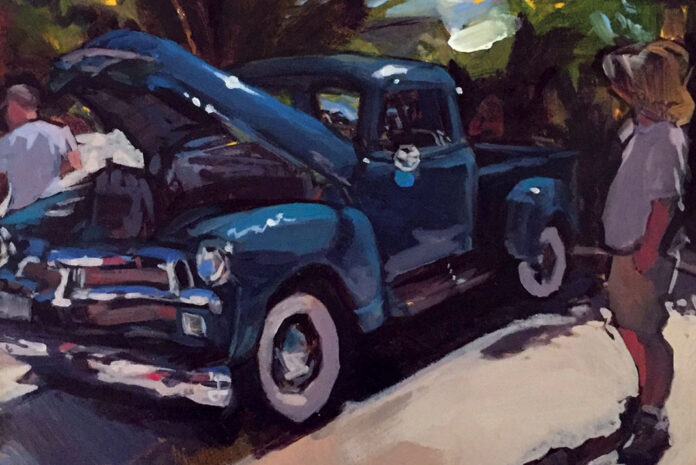By Jonathan Burger, Craven Arts Council & Gallery, Inc.
Where are you from and how did you end up in New Bern?
I am originally from northwest Ohio. I moved to Baltimore for my first job after college and from there to Chevy Chase, MD, St. Louis, MO, Des Moines, IA, Wilmington, NC, and New Bern ten years ago when my husband took a job here and my daughter began attending Epiphany where I currently teach art in grades 3-5.
How did you get your start in art, are you self-taught or formally trained, or a combination of both?
I got my start in art very early. My mother has her undergraduate degree in painting and she was certified as an art teacher while I was in elementary school. I drew and painted with her from the time I can remember. The Toledo Museum of Art was about an hour away so we visited a lot. I had some outstanding art teachers growing up in school as well-especially my high school instructor. I began my college studies in fashion design at the University of Cincinnati, but eventually switched to medical Illustration. The medical art program at Ohio State took six people a year and the curriculum was a combination of science classes like gross anatomy and histology from the medical school and illustration classes. I’ve walked that fence between art and science ever since, sometimes taking organic chemistry or microbiology, sometimes taking classes in illustration, printmaking, life drawing, or most recently art education classes.
Is there a central theme to your work, or many themes?
If I do have a central theme in my work I would say it is a reflection of my life and the time in which I live, the physical surroundings, and people, in the tradition of Fairfield Porter or Mary Cassatt. My neighbors, my house, my animals have all made appearances in my work. Paintings incidentally record life. I also explore themes more related to just myself-I like painting swimmers and swimming pools, flowers from my yard or walks that I take with my dogs.

I know you also work as a medical illustrator, which I think most people would think is an incredibly interesting field. Can you tell me what that’s like, what sorts of things you illustrate and your process?
My work as a medical illustrator entails meeting with physicians or other hospital/medical school staff requiring anatomical or scientific art to accompany scientific journal articles, book illustrations, patient education materials, or in-house publications. Large research oriented facilities like Washington University Medical School are constantly pushing the front lines of surgical and scientific research which means a constant demand to publish. While I worked at the medical school I sketched in the OR during surgical procedures documenting a new method or tool in order to train other physicians. Some of my projects included illustrating open heart surgery, lung reduction, pediatric neurosurgery, and ligament reconstructions like Tommy John surgery.
I was trained in the old school method of pen and ink illustration, using a croquille pen dipped in ink to create line systems describing volume, value, or tone. I picked up my Adobe Photoshop and Illustrator skills along the way during my jobs. Thankfully no more airbrushing using an actual airbrush and CO2 tank (here I would insert a crying emoji)! I’m grateful my training and work experience covered the transition between the traditional methods of illustration and the modern. There are definite applications for both and in my mind being able to draw is a strong basis for any art-whether it is described as illustration or fine art.
My fine art training has been more eclectic. I studied painting at the Georgetown Studio School in Washington, DC, then spent a year as a postgraduate studying painting at Washington University before taking my illustration job. I’ve taken classes and workshops everywhere I’ve lived to learn technical aspects of different styles of art, and I love to read. I try to keep current with the art world for myself and my students by reading about contemporary artists they may not have heard of.
Talking about your medical illustrations, do you see a relationship between that work and the gallery works you create as an artist? What similarities and differences are there?
I do see some overlap in my gallery work and my medical art; one builds on the other. It’s convenient to know the anatomy under a model, and I find it interesting. My gallery work and medical illustration are both very traditional. I rely on accurate rendering for both. My medical art requires great accuracy and control while my gallery work is looser.
Is there an artist in your field or any other who inspires you or you admire?
I am constantly inspired by other artists, famous or otherwise. In painting I admire the traditional like Velazquez, Vermeer, or Sargent, as well as more contemporary artists like Alice Neel, Jenny Saville, or Kehinde Wiley. There are a lot of great medical illustrators I like as well although that is a bit more esoteric. I still love the old Max Broedel pen and ink renderings from Johns Hopkins in the early 20th century. I really admire anyone who consistently works. My students were amazed to hear about Wayne Thiebaud working at 100 years old or Yayoi Kusama still working in her 80’s.
What specific award, exhibition, or piece are you particularly proud of, and why?
While I have received awards and recognition in juried art shows over the years, it was discussing my piece from the State of the Art/Art of the State show at the Cameron Art Museum in Wilmington in 2010 with curators Susan Davidson from the Guggenheim Museum, NY, and Nicholas Cullinan, Curator of the Tate Modern in London, that was a highlight. It was a validating experience after painting on my back porch for years with little professional feedback.
In one sentence, what is art to you?
Art is my work, it feels meaningful.
Do you have any advice for artists just starting out or someone wanting to get into the arts?
I would advise anyone who is interested in art to make art. I know that seems simple, but it really is that simple. Take a class if you need to. People find all kinds of excuses to not do it, or do things peripherally as a substitute. I reread Steven Pressberg’s book “The War of Art” regularly because he identifies and addresses that topic. I have days when I don’t feel like going to my studio, but a professional shows up and puts the work in.
I know your work will be in Bank of the Arts for the Faces of New Bern exhibition, but where else can people find you work?
In addition to the Bank of the Arts show my work may be found at Carolina Creations and The Last Detail here in New Bern.

